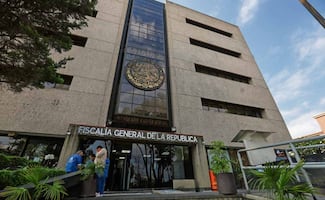Más Información

Posponen en el Senado discusión y votación de reforma para crear la figura de “jueces sin rostro”; se discutirá en febrero

Harfuch descarta que explosión de coche bomba en Michoacán sea un hecho terrorista; "son actos criminales", sostiene

SRE: Buscaremos llegar a un acuerdo con EU por adeudo de agua; vamos a respetar derecho humano al líquido, afirma
At least 16 criminal gangs involved in the retail sale of drugs, kidnapping, extortion, and robbery in all its forms are currently operating in Mexico City , according to a report issued by the city’s Ministry of Citizen Safety (SSC-CDMX) , and the Investigative Police, from the Attorney General’s Office .
These groups are distributed throughout all 16 boroughs in Mexico City, though a few of them are currently disputing control of some of the territories and have even formed alliances to compete for the dominance of areas where larger groups, such as Unión Tepito, Anti-Unión, and the Tláhuac Cartel , conduct their criminal operations.
The problem has been fuelled by the active presence of the Jalisco New Generation Cartel (CJNG) , which has created more violence due to “settlings of scores” that have mostly affected the Gustavo A. Madero borough .
The analysis suggests that Unión Tepito has a larger influence in the north, central, east, and south areas of the city, while its main rival, the Anti-Unión criminal group, also operates in the same sectors, which results in constant disputes over drug sales points on the streets, and an increase in murder cases.
Meanwhile, criminal groups such as the Tláhuac Cartel and the Los Rodolfos criminal groups seem to have taken a leading role in the south and west areas of Mexico City. Some other groups began to emerge over the last year, such as the Los Molina criminal group, which has been accused of multiple murders in the Los Culhuacanes area. Moreover, they are currently in conflict with Los Rodolfos, who are currently based in Xochimilco .
With this in mind, Mexico City authorities were able to determine that the Unión Tepito, Anti-Unión, and Tláhuac cartels have implemented a new system to subsist. The criminal groups are now installing franchises of sorts which are operated by locals who deliver a percentage of their profit to the families in control of the cartels just so they can use the organization’s name for their own advantage.
Thus, for example, some suspects have been identified in the city’s central area who work for the Unión Tepito cartel, intimidating and extorting other businesses by using the group’s name. Police authorities have identified suspects such as “El Lunares,” “La Hormiga,” “El Huguito,” “El Manzanas,” “El Jamón,” and “El Pistache,” two of which have been arrested.
On the other hand, small businesses such as Los Robles, TLH-Cindy, El Sindicato Libertad, Los Tanzanianos, El Tuercas, and El Espárrago have been working for the Tláhuac Cartel in the south and west areas of the city.
This business technique allows the criminal groups to manage cash flows and pay for lawyers, security personnel in local prisons, and even bribes to SSC members and local policemen.
Local authorities are now worried about the expansion of th e Jalisco New Generation Cartel in the city, with members in the Gustavo A. Madero, Cuauhtémoc, Cuajimalpa, Iztapalapa, and Tlalpan boroughs .
Since February, authorities have requested the intervention of Mexico’s new National Guard to avoid their expansion.
dm
Noticias según tus intereses
[Publicidad]
[Publicidad]












